Saving endangered right whales pits advocates against lobstermen
In the struggle over how to save a dying whale species, protect the livelihoods of thousands of New England lobstermen and ship goods faster to millions of American consumers, something eventually will have to give.
Without more urgent action and greater compromise, experts say, that something is likely to be the North Atlantic right whale.
It's a grim prospect for whale scientists and advocates, and for lobstermen, who love the sea. But the lobstermen fear efforts to save the animals could leave their economic futures just as endangered as the whales'.
Right whale numbers have spiraled downward over a decade.
Last fall, to bring attention to the animals’ plight, the Monterey Bay Aquarium’s Seafood Watch placed American lobster, snow crab and others on its "red list" of seafoods to avoid. A few national retailers said they would no longer sell lobster.
Then the Marine Stewardship Council rescinded its certification of lobster caught in the Gulf of Maine as “sustainable.”
How does climate change affect you?: Subscribe to the weekly Climate Point newsletter
READ MORE: Latest climate change news from USA TODAY
The announcements were the latest in a series of emotional controversies over protecting the whales as climate change rapidly warms waters off the northeastern coast. The Gulf of Maine Research Institute reports that the past two years have been the warmest on record in the Gulf of Maine.
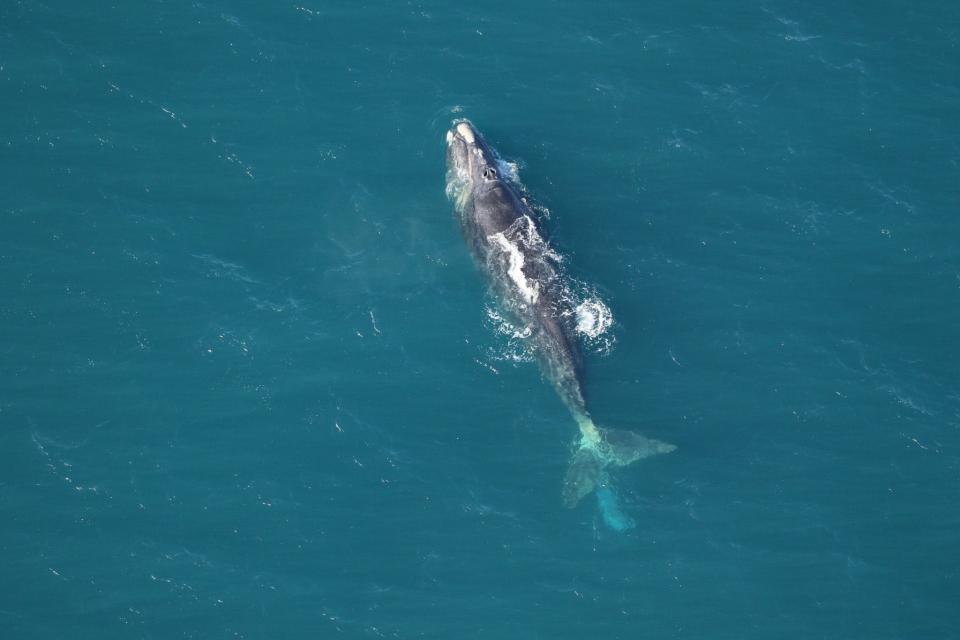
Advocates wage battle in courts of law and public opinion, trying to force the federal government to move faster to protect the dwindling numbers of whales from the dangers they face in the waters off Canada and the U.S., including vessel collisions and entangling fishing gear.
Frustrated Maine lobstermen push back at drastic proposed rule changes they say could devastate their industry by limiting their catch and increasing their costs, with little concrete evidence, from their viewpoint, that ropes are killing the whales.
Their industry so far has thrived while they've worked to meet new federal requirements, but lobstermen fear for their future. They say they’re asked to shoulder too much of the burden to save right whales when other kinds of fishing and vessel strikes also harm the animals.
Caught in the middle are federal officials, charged with making final decisions on boat speed limits, gear, traps, nets and closures intended to protect the animals.
Even the loss of a single right whale to human causes threatens the species’ survival, federal officials say. Already this year, two have been found dead, one from a vessel strike and the other a calf separated from its mother. Four were seen injured and tangled in fishing gear, and at least one is expected to die.
Right whales in peril
For centuries, whalers called these 60-ton animals “right whales” because they swam slowly, floated beside boats after death and produced lots of blubber and oil, making them the “right” whales to kill. Hunted to the brink of extinction until whaling was banned in the 1930s, their population was estimated at fewer than 100.
By 2011, their numbers had risen to nearly 500. Almost immediately, the trend began reversing. Fewer calves were born. Whales were hit more often by boats. They swam into entangling ropes.
Today, the animals – one of the most endangered whales in the world – are in dire straits. An estimated 340 remain, with fewer than 70 breeding females. Births during the winter calving season off the southeastern U.S. are far below what scientists say is needed to sustain the species.
Snow Cone, named for a white pattern in front of her blowholes, is the right whale version of a Kardashian, attracting one headline after another. She and her calves demonstrate the myriad threats facing the whales:
She delivered her first calf off Georgia in 2019. Then, in a rare event, the pair was spotted in the Gulf of Mexico.
In June 2020, the calf was found dead off New Jersey, killed by two vessel strikes, one of two calves that died in boat collisions that year.
Snow Cone was found entangled in March 2021. A Massachusetts rescue team removed 300 feet of rope but couldn’t get it all.
She astonished biologists by delivering her second calf while still entangled in December 2021.
A New England Aquarium crew spotted her with more entangling gear, emaciated and covered in whale lice on Sept. 26. She hasn’t been seen since.
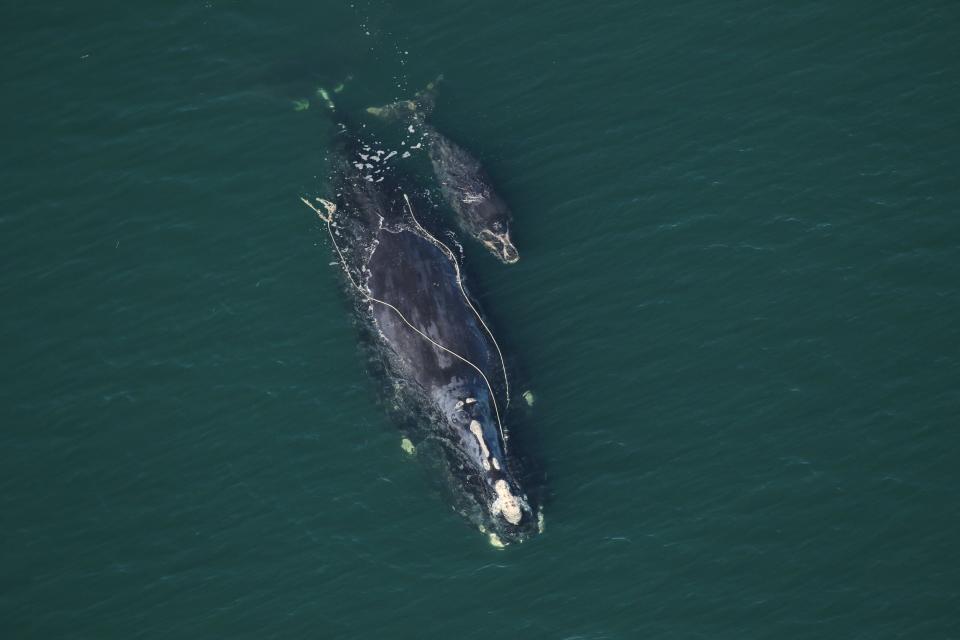
Known deaths and injuries averaged about eight right whales a year from 2016 to 2020. The latest population assessment from the National Oceanic and Atmospheric Administration estimates actual annual deaths at 31, including cases where dead whales are never found.
WINDMILLS AND WHALES: Whale deaths exploited in 'cynical disinformation' campaign against offshore wind power, advocates say
MORE COVERAGE: Growing group of mayors at odds with experts over whale deaths and offshore windmills
Maine lobstermen fear for their livelihood
Kristan Porter has trapped Maine lobsters for 30 years to provide for his family, as did his grandfather and great-grandfather before him.
Porter, president of the Maine Lobstermen’s Association, fears increasing regulations to save the whales and environmental groups' efforts to persuade consumers not to eat lobster could devastate communities along the coast and deprive his son of his own lobster business one day.
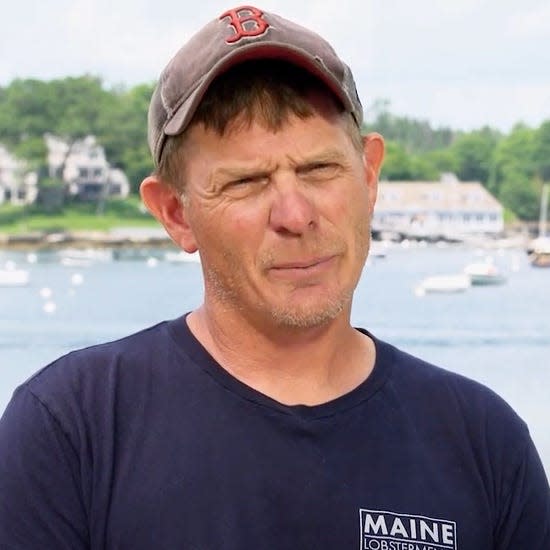
If lobstering goes away, “this community is gone, plain and simple,” said Porter of his home of Cutler, Maine, and others. Lobster drives Maine’s coastal economy, to the tune of more than $1 billion a year.
Porter is one of more than 5,000 lobstermen in New England.
Maine and Massachusetts harvest more than 90% of the American lobster distributed in the U.S. and internationally.
Maine’s lobster harvest doubled in pounds between 2000 and 2012, reaching a high of 132 million pounds in 2016, according to NOAA Fisheries data.
In 2021, Maine lobstermen landed more than 110 million pounds, fetching record prices of $739 million.
Maine lobstermen pride themselves on their sustainable measures, including size limits, throwing back egg-bearing lobsters and notching tails of females to signal they be left alone to keep the population healthy.
They're accustomed to the ups and downs of the economy, such as the off-year during the pandemic, and a better year in 2021. Things weren't as good last year, Porter said. "People were spending their money on groceries and gas rather than eating off the top of the menu at restaurants."
The lobstermen have gotten used to newer requirements to mark their gear, put weak points in their lines that break if a whale swims into it, and use line that sinks between the traps instead of floating in the water. Porter said it's the additional rules proposed to further reduce risk to whales in the Gulf of Maine that could be their undoing.
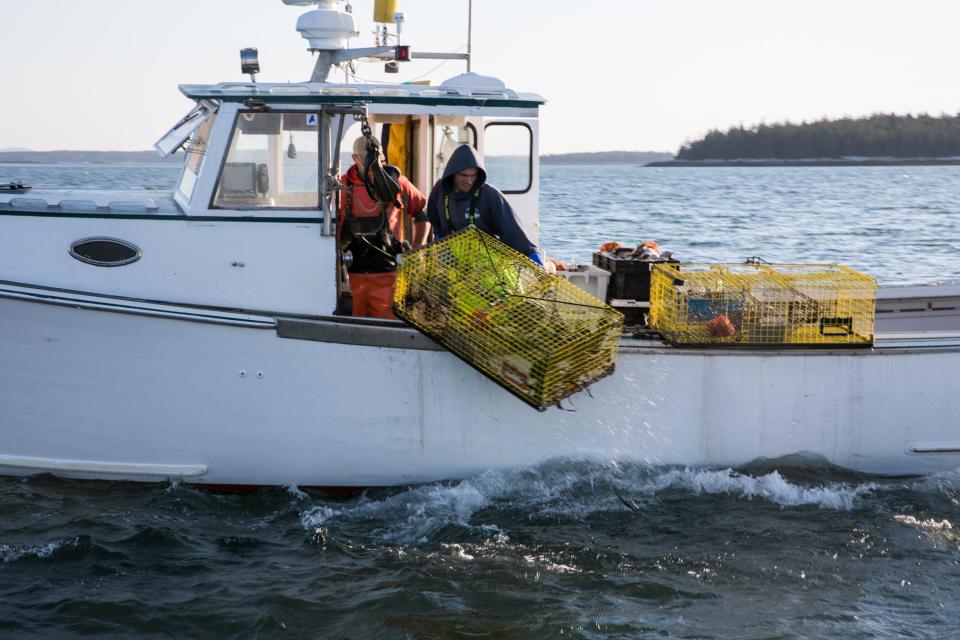
Proposed measures to close large areas of the Gulf of Maine to lobstering for certain months of the year and require the lobstermen to use fewer traps to protect the whales "would put a lot of people out of business," he said. Under the latest proposal, the area he fishes would be closed in June and July, his "most productive months."
He and Maine Sen. Angus King and others say the lobster industry should be given a chance to prove the existing regulations are working before new restrictions are added, Porter said. No whale death has been specifically linked to Maine lobster gear, they said, so they want to see evidence that Maine lobstering is a threat and warrants the new rules.
Too much responsibility is placed on the lobster industry without proof it's to blame for any whale deaths, said Togue Brawn, a lobsterman’s daughter and founder of Downeast Dayboat, a company that specializes in delivering scallops within 24 hours of harvest. Maine lobstermen are “being penalized for not single-handedly bringing about the recovery of an endangered species," she said. "I really hope (the whales) don’t take the lobster industry with them.”
How experts say fishing harms whales
There’s no doubt among whale experts that lobster and crab gear all along the coast of the Canada and the U.S. – from the Gulf of St. Lawrence southward – takes a heavy toll on right whales and other whales.
While Gulf of Maine lobstermen say they don’t see whales, aerial surveys and acoustic monitoring prove the animals are there, said Michael Moore, a senior scientist at Woods Hole Oceanographic Institution who wrote the 2021 book “We Are All Whalers."
The water is filled with lines and traps they can swim into, Moore said. "The chance of entanglement is almost sure. Wherever (the whales) go, wherever there’s rope, there’s a chance of entanglement.”
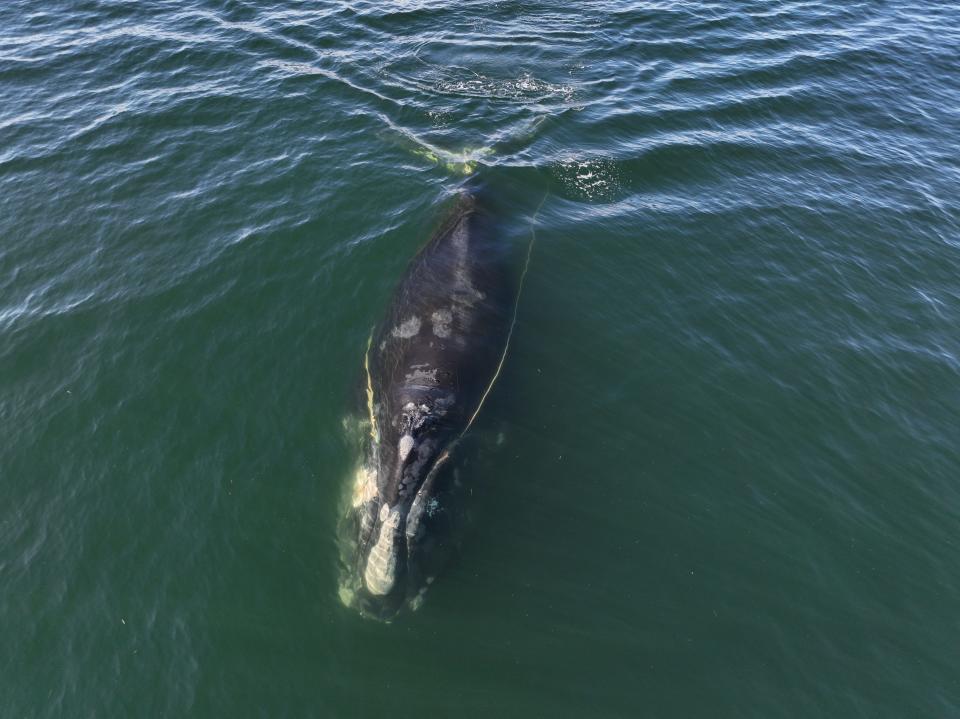
Rope is deadly and causes severe injury:
More than 83% of right whales bear scars from one or more entanglements.
Rope wraps through their filtering baleen plates and prevents them from eating; it also gnaws into their flesh, creating gaping, bloody wounds.
The lines create hundreds of pounds of drag that wear a whale down as it lugs the gear sometimes thousands of miles.
Even nonlethal rope injuries harm the whales' long-term health, reduce their body weight and interfere with a female's ability to get pregnant and give birth.
In every case in which a cause of death could be determined in an adult right whale from 2003 to 2018, the animal died as a result of human causes, NOAA reported. Scientists estimate roughly two-thirds of the human-caused deaths and serious injuries are from entanglements and a third from vessel strikes.
Whose gear is it?
The evidence lobstermen and their supporters seek regarding where whales are entangled and by whose gear has been difficult to gather, in part because of the harsh conditions the whales live in.
“There’s a lot of cases where we just have no idea where the gear is from,” said Amy Knowlton, a senior scientist at New England Aquarium.
But that is changing. U.S. and Canadian fishermen, under a variety of rules and voluntary measures, are now marking gear.
"If it comes up on a whale and it’s our fault, we’ll know it,” said Beth Casoni, the Massachusetts Lobstermen's Association's executive director.
Canadian officials confirmed that gear found on an entangled right whale off the Georgia coast this winter belonged to a Nova Scotia lobstermen.
To address entanglements throughout the range, fishing activity needs to be transitioned, Knowlton said, “in a new way that allows fishermen to keep doing their business but not killing whales in the process."
DEFINITIONS: Is climate change the same thing as global warming? Definitions explained.
CLIMATE CHANGE CAUSES: Why scientists say humans are to blame.
CLIMATE CHANGE EFFECTS: What are the effects of climate change? How they disrupt our daily life, fuel disasters.
Massachusetts has been proactive, Knowlton said, requiring weak links or weaker ropes and late-winter area closures since 2015.
Much of the controversy focuses on more whale-safe gear the Aquarium, Woods Hole and NOAA’s panel of experts have worked with lobstermen to develop. Often referred to as "ropeless," it leaves less rope in the water column to snare whales. One newer style of gear, called "on demand," would sit on the ocean bottom with a receiver that allows a lobsterman to signal the rope to rise to the surface.
The modifications could be phased in over time, in deeper waters first, but are crucial to protect right whales, Knowlton said.
Lobstermen question the safety and the “staggering” costs of newer gear, Casoni said.
The solution is to find a way to subsidize the costs, Moore said. Canada, for example, pledged $20 million to help its fishermen buy whale-friendly gear.
Last July, a federal judge ruled NOAA regulations failed to comply with federal law because the agency hadn't gone far enough to protect the right whales from entanglement. The agency was poised to adopt new regulations but suffered a setback in December when Maine's congressional delegation added a last-minute rider to the bill that delayed the effective date of the new rules to December 2028. The measure did include wording to add a grant fund for alternative technologies and monitoring.
Lobstermen call it their "Christmas miracle."
In the latest edition of the journal Science, Moore and two other scientists call it a precedent to circumvent the Endangered Species Act.
How consumers and vessels harm whales
Moore and other whale scientists say much responsibility also rests with seafood-eating, online-ordering American consumers who don't think about sustainability or the footprint of all the shipping vessels that share the oceans with whales.
International trade on the world’s oceans doubled from 2001 to 2019, according to the United Nations, and more cargo is carried in mega-container ships.
NOAA enacted seasonal speed restrictions for parts of the whales' migration route along the Atlantic coast more than 10 years ago. Studies show deaths decreased inside those zones but increased on the outside, and fishing vessels had the highest compliance with the speed limits.
New NOAA rules pushed for by advocates expand the speed zones and apply them to vessels 35 feet long and longer instead of the current 65 feet. The rules are expected to be in place this summer.
The debate shouldn’t be over whether lobster fishing or the whales survive, Moore said. “It’s taking the actions necessary to ensure both survive, and getting everyone to accept part of the responsibility."
He remains cautiously optimistic things can be turned around, he said. "We need to save the North Atlantic right whale to save ourselves.”
Dinah Voyles Pulver covers climate and environment issues for USA TODAY. She can be reached at dpulver@gannett.com or at @dinahvp on Twitter.
This article originally appeared on USA TODAY: Saving endangered right whales pits advocates against lobstermen

